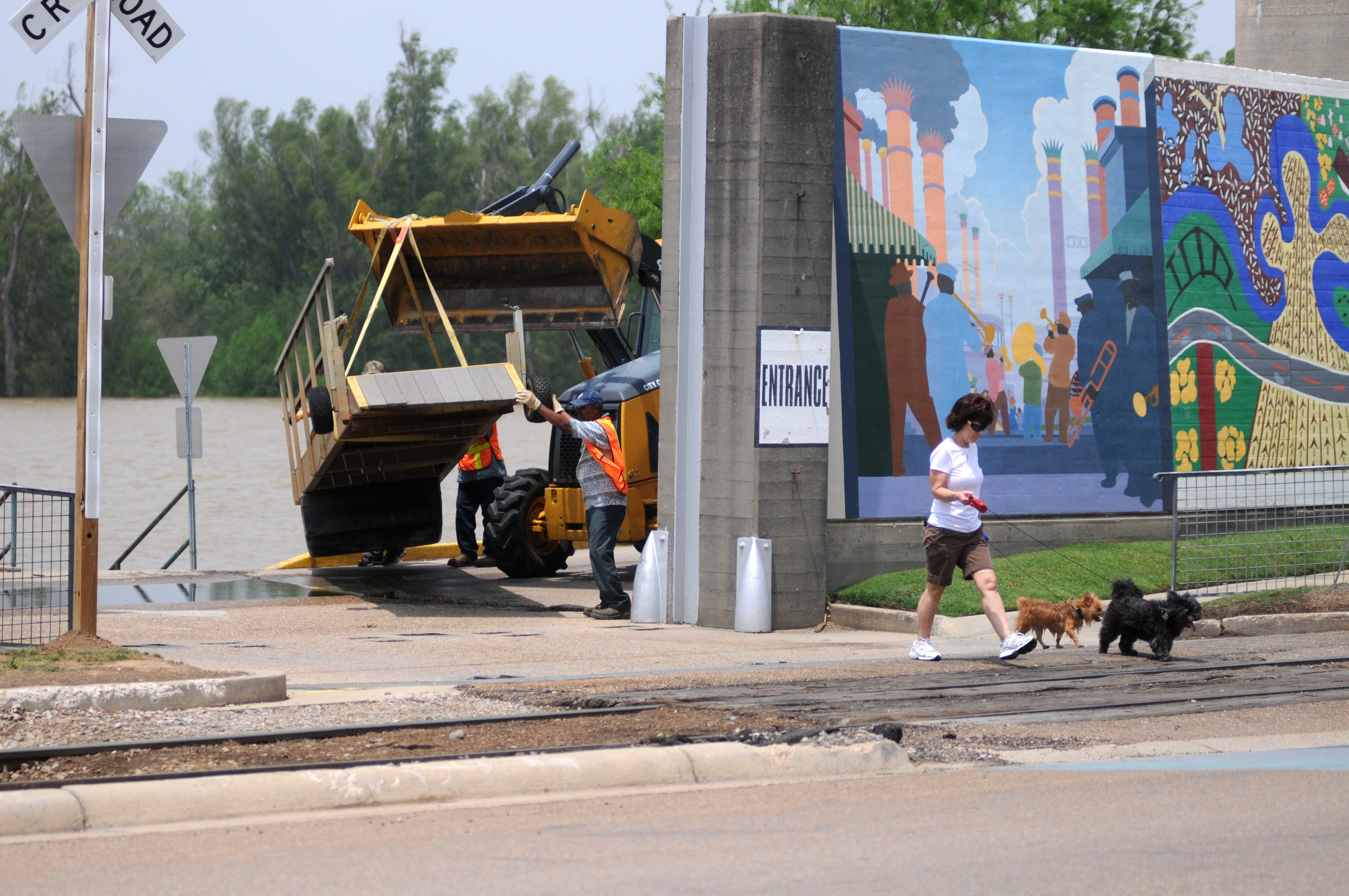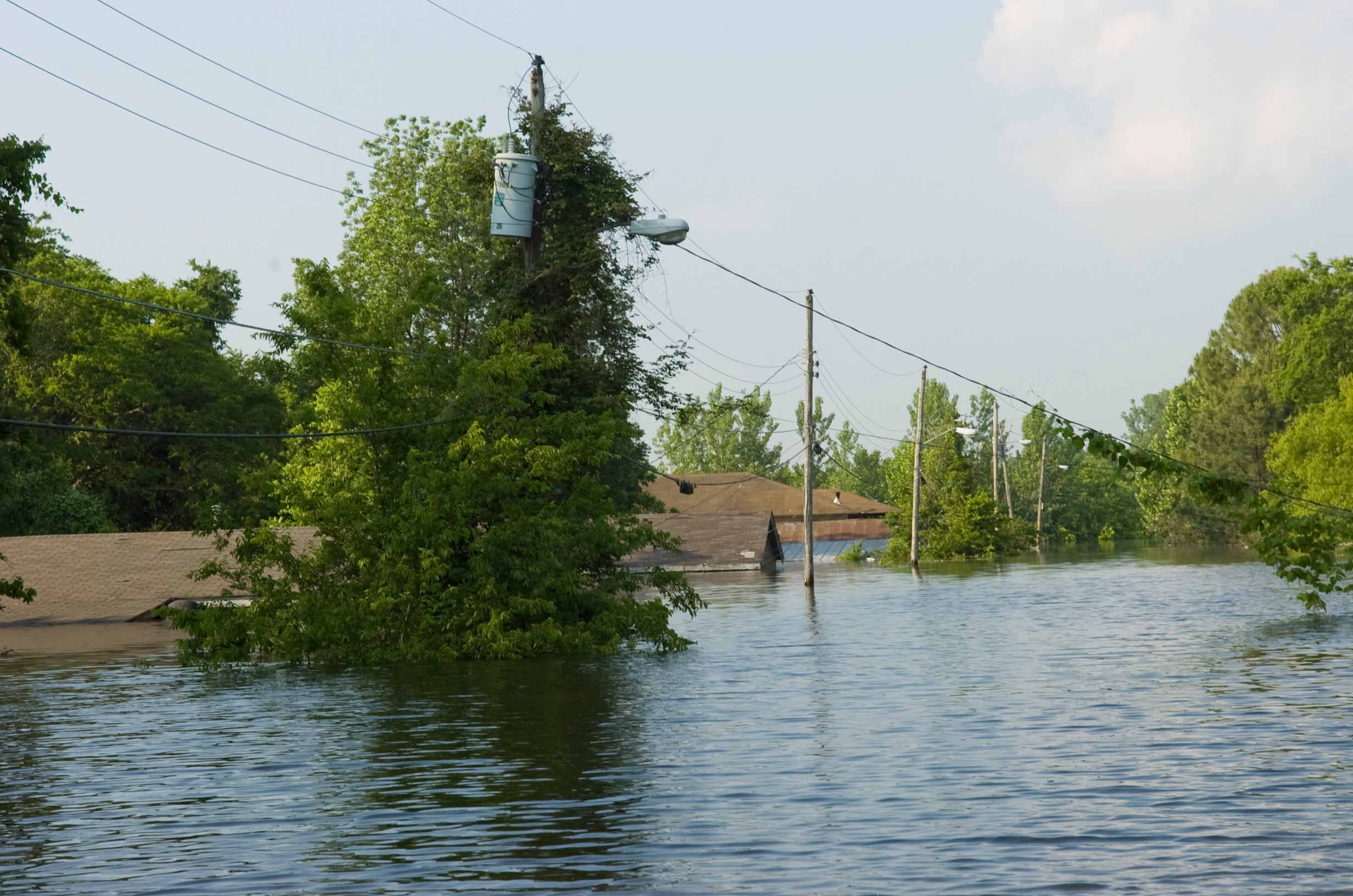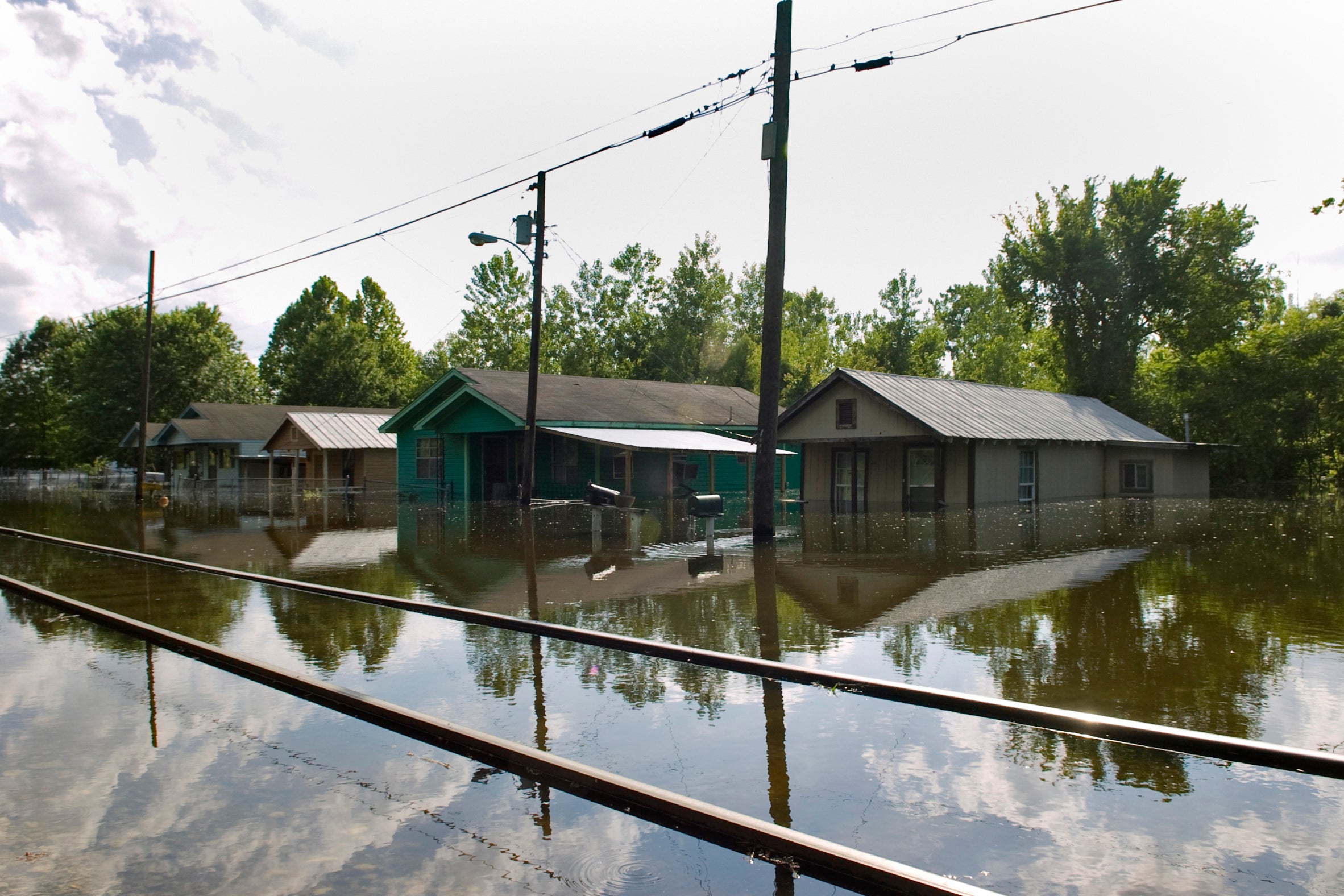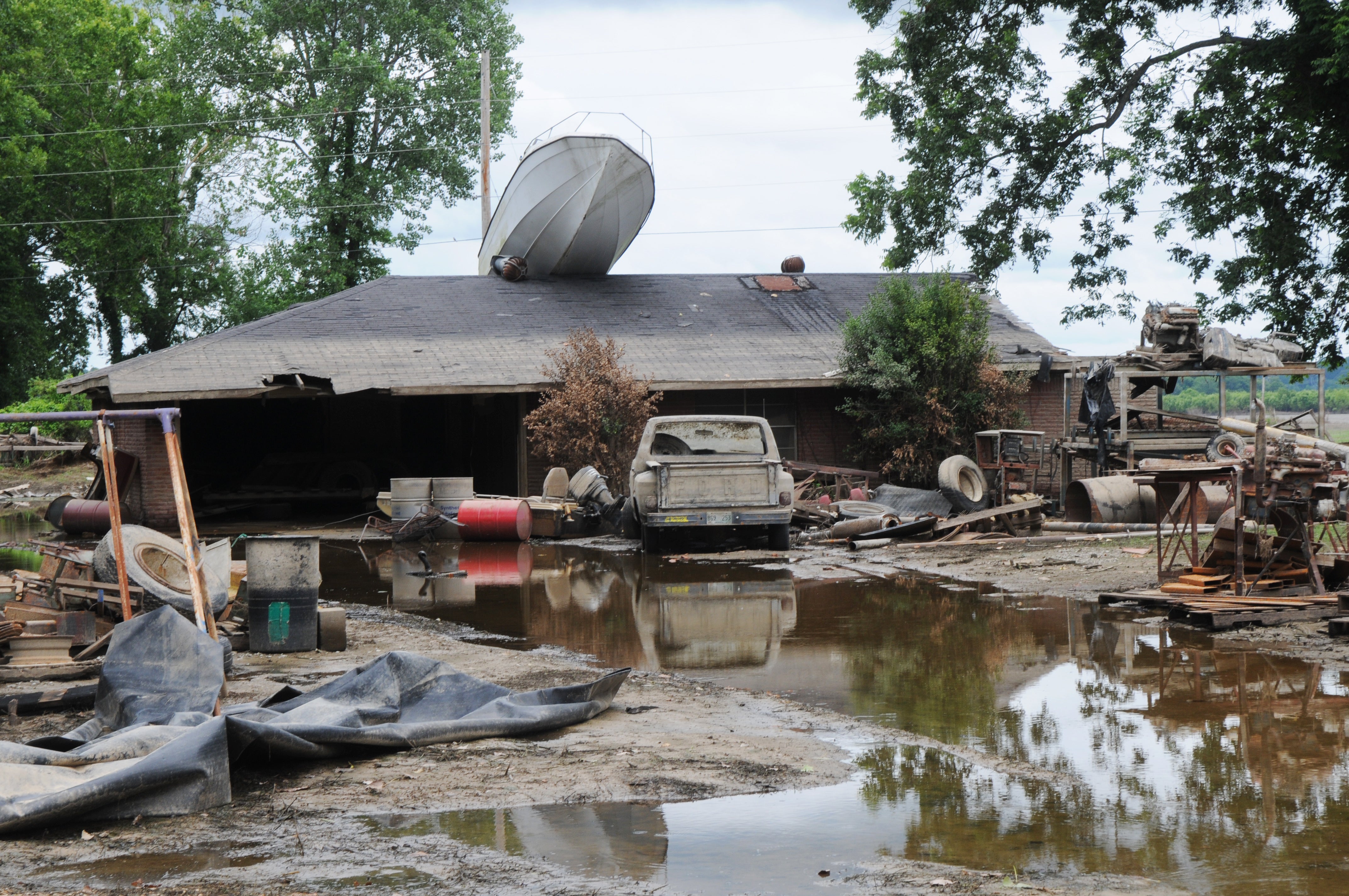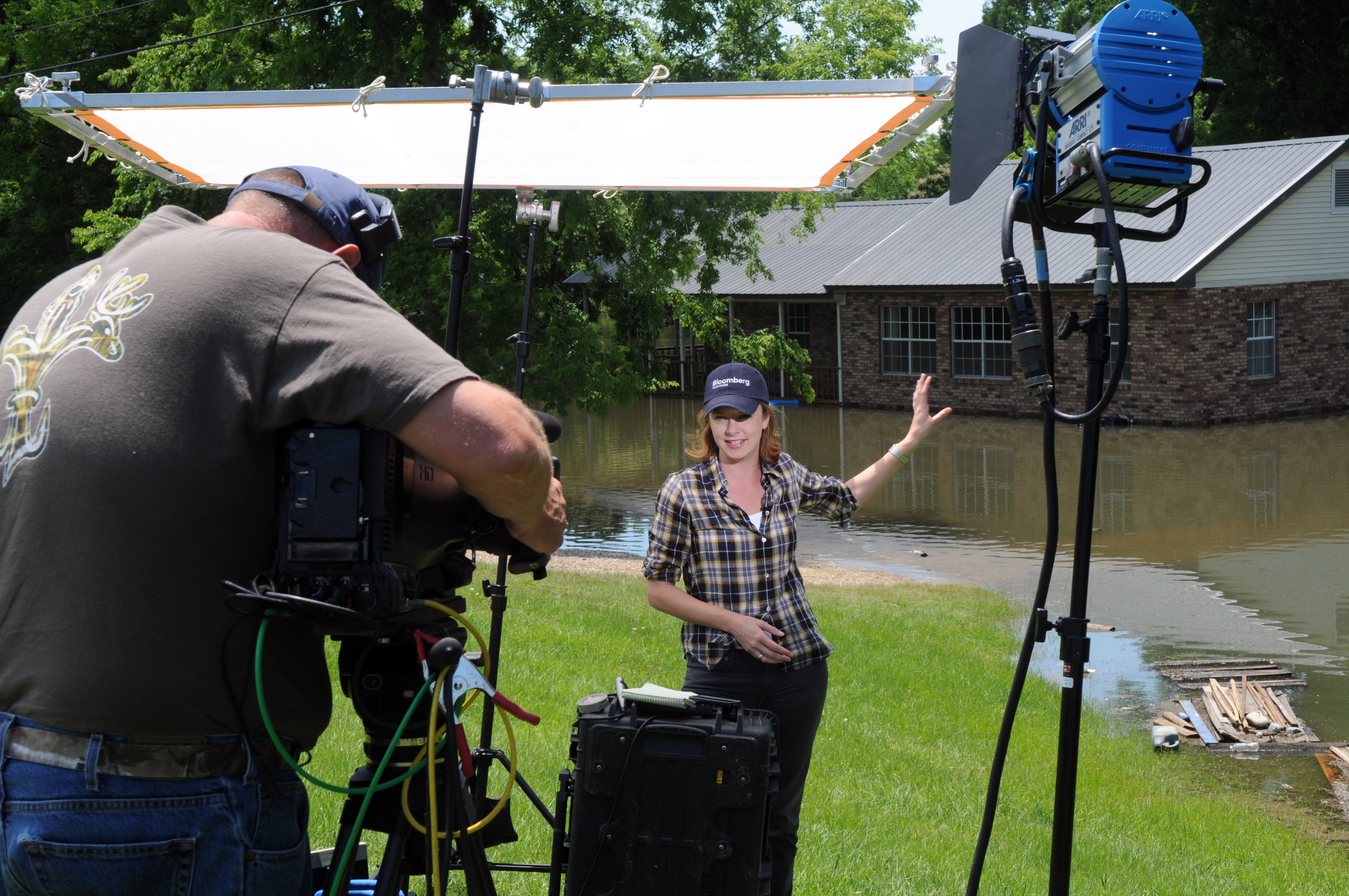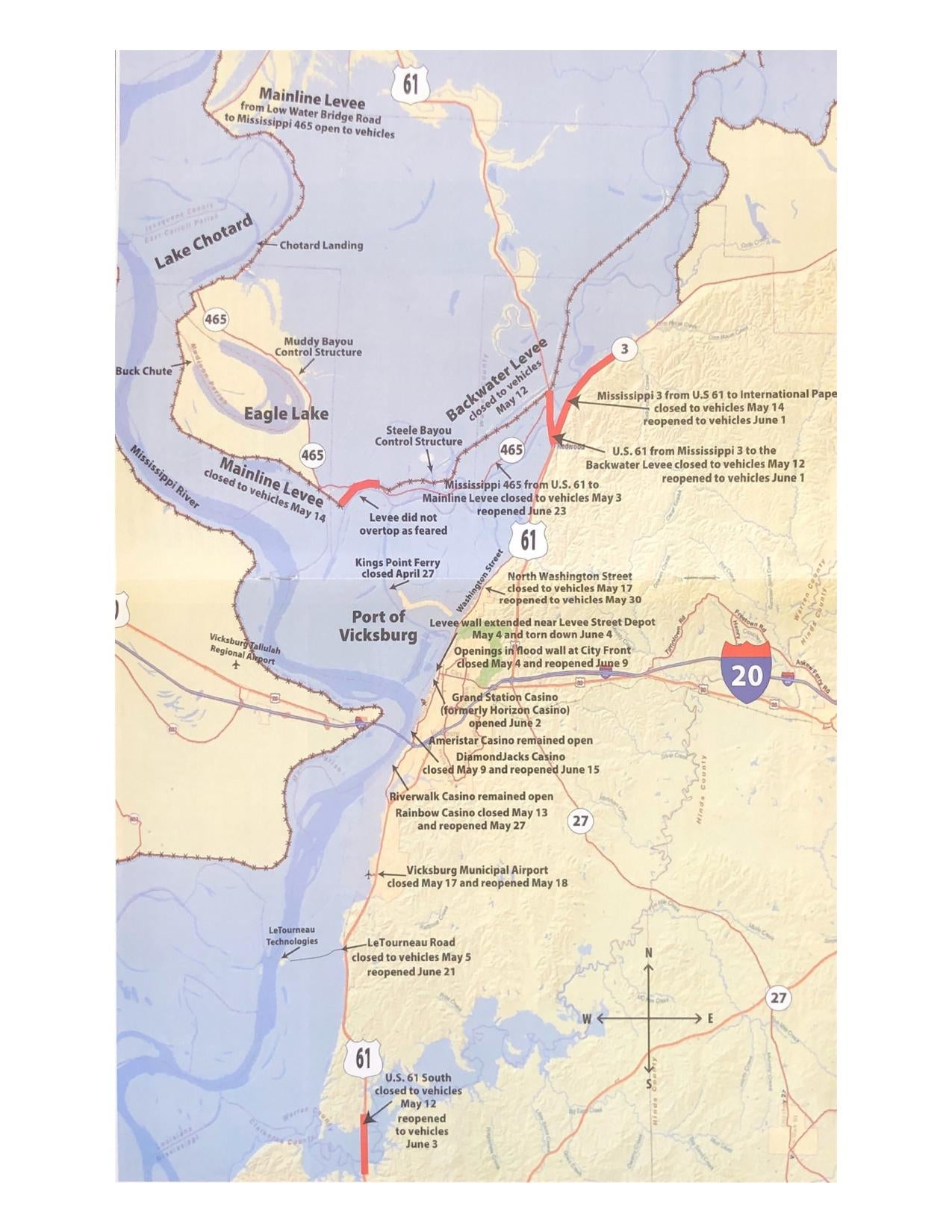10 Years Later: 2011 flood had record crest, forced people from homes, proved flood controls worked
Published 7:00 am Saturday, June 12, 2021
It was one of those events that may come once in a lifetime.
The 2011 flood that hit Warren County 10 years ago was the first flood to truly test the flood controls built under the Mississippi Rivers & Tributaries Act of 1928, a massive flood improvements program to prevent the damage and loss caused by the Great Flood of 1927.
The MR&T, as it is called, was a comprehensive and unified system of public works within the lower Mississippi Valley that would provide unprecedented flood risk management and an equally efficient navigation channel.
It was a system that employed levees and floodwalls, channel stabilization, improvements to tributaries and a system of floodways that could be activated to relieve pressure on areas in the lower Mississippi River Basin.
According to “Room for the River,” a report on the flood prepared by the U.S. Army Corps of Engineers, the 2011 flood caused $2.8 billion in damage and damaged 21,000 residential and business buildings. An additional 1.5 million buildings were spared damage because of the improvements built under the MR&T.
Locally, the flood level at Vicksburg reached 57.1 feet on May 19, nine-tenths of a foot more than the 56.2 feet reached by the 1927 flood. In 2011, the river stayed above flood stage until June 17. And the whole time the river was up, the area was in a drought. Unlike the 2019 Backwater Flood, no rain fell in the area during the 2011 flood.
Floodwaters covered homes in the Ford Subdivision and Kings community in Vicksburg and other areas of the county. It closed U.S. 61 North and South and virtually isolated the Eagle Lake community. It forced the closure of one public school, forcing school officials to relocate the students to another school.
It threatened Green Meadows Subdivision and some surrounding businesses off U.S. 61 South, forcing them to begin building a levee to protect themselves. The flood also attracted national media which, in many cases, used the Yazoo & Mississippi Valley Railroad Depot as a backdrop.
Retired Col. Jeffery Eckstein, then-commander of the U.S. Army Corps of Engineers Vicksburg District, remembered when he got an indication that the 2011 flood would be a serious threat.
“It was Easter weekend and our teams from the district were called out to get ready to move up to (Bird’s Point) New Madrid and be prepared to execute the operation of the New Madrid floodway,” he said. “Any time you get those indications that you’re going to have to move people and equipment for demolition, it’s an indication that it’s going to be a near-record flood; we just didn’t know that it was going to be a record flood.”
Within a week, he said, the District began mobilizing for a flood fight, meeting with members of Warren County Emergency Management and discussing operating the flood gates in Vicksburg.
For Peter Nimrod, chief engineer for the Mississippi Levee Board in Greenville, it was the amounts of rain falling in the northern basins and the Mississippi River forecast for Greenville that got his attention.
“April 23, the forecast for Greenville jumped from 49 feet, 1 foot above flood stage, (to) 59 feet — a 10-foot jump in the forecast in one day. We knew it would be bigger than the 1927 flood,” he said.
The level at Greenville eventually reached 64.2 feet.
The early forecast, Nimrod said, gave the levee board a chance to get ready for the flood.
The floodwaters that hit the lower Mississippi Valley were a mix of snowmelt from the upper Mississippi Valley and rain from the Ohio River Valley, said Jeffrey Graschel with the National Weather Service River Forecast Center in Slidell, La.
“About 25 to 30 percent was from snowmelt,” he said, adding that snowmelt alone would not produce a flood in Vicksburg. “There has to be rainfall in combination or rainfall alone to get flooding in our area.”
And 2011 had significant rainfall, he said. “The big key was, we had about two weeks of rainfall that fell over the lower Ohio Valley, so the lower Ohio as really was the area that got hit the hardest during that event.
“It was about 20 inches of rainfall that occurred over a 20-week period.”
One of the major problems the Corps faced during the flood, Eckstein said, was in the Eagle Lake area, where the Buck Chute Bayou levee was threatening to collapse.
Part of the resolution, he said, involved raising the level of Eagle Lake to relieve the pressure on the levee.
“There was a weak spot that was probably the biggest concerning point that we had in the flood fight, and there were a couple of other spots in the levee that we had,” Eckstein said. “During the flood fight there were a couple of other places where we had levee stability issues but they were minor. But at Buck Chute Bayou we had discovered several sand boils out there, and the assessment was the levee could have failed at that point because of the record flood.”
Raising the level of the lake, he said, created a balance and prevented the river from cutting through the levee, causing it to collapse and put more water in the backwater area.
“We had three major problem areas that we needed the Corps of Engineers to help us with, and they did,” Nimrod said. “It looked like the backwater levee was going to be overtopped and they came in and armored the landside slope of the backwater levee and did a nice job there.
“Buck Chute had some measurable issues and they came in and did a lot of work at Buck Chute putting in ring levees with sand, a whole lot of measures to make sure we didn’t lose the levee at Buck Chute,” he said.
Besides the problems with the Buck Chute levee, Nimrod said the Levee Board had a problem in northern Bolivar County that required the Corps to build a ring levee.
“At the crest, we had a situation at Albemarle in Issaquena County,” he said. “The Corps came in and built a stone dike on the levee because the levee had a landside slide on the slope and we had some sand boil issues there, too.
“Many parts to this 2011 flood it was by far larger than the 1927 flood,” Nimrod said. “It passed 26 percent more water than the 1927 flood without any failures anywhere which was outstanding.”
He and Eckstein both said the drought period during the flood proved beneficial.
“Allowed us to travel and inspect the landslide of the levee,” Nimrod said. “The ground was dry so if we saw there was water it wasn’t rainwater; it was deep water (indicating seepage). Had it been raining or underwater, we would not have known.”
“At the time, I knew we were blessed that we did have a drought because it alleviated all the backwater flooding that could have happened with Steele Bayou (control structure) closed,” Eckstein said. Rain, he said, would have been stored in the backwater areas causing flooding.
“So all we had to worry about would be the levee being overtopping and having the Mississippi drain into the backwater,” he said.
“We learned a lot about our levee system and we found some old problem areas that became major problem areas. We found brand new problem areas that we never knew about before,” Nimrod said. “We worked really hard during the flood on those problem areas to make sure we put some kind of temporary measures in place to pass that flood. Even during the flood, (all the temporary measures) worked.”
Nimrod said other repairs were later made that helped the levee system in the 2019 flood.
“Back in 2011, the flood affected every part of the Mississippi Rivers and Tributaries system,” Eckstein said. “One of the keys to that flood fight was operating the entire system as it had been designed. I think that was the key thing — the entire system operated as it was designed to.”


